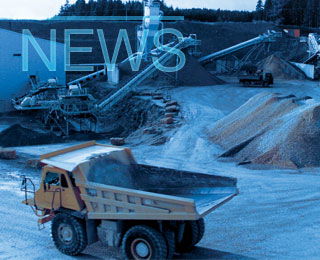With the European Commission having this week given the go-ahead to HeidelbergCement’s acquisition of Italcementi, Italy’s largest cement producer is set to become even less dependent upon what was until now its home market. Since 2007 Italcementi's domestic market has contracted from a peak consumption of 46.4Mt nine years ago to 19.6Mt in 2015, with demand predicted to be flat in 2016. The Italian cement producers’ association, AITEC, predicts that consumption will remain below 23Mt until at least 2020.
Prices have fallen to around EUR50/t (ex-works), which industry observers claim is close to the variable cost of production of EUR43/t. Despite this, the Italian authorities launched an investigation against Buzzi Unicem, Cementir Italia, Industria Cementi Giovanni Rossi and Holcim Italia in November 2015, claiming that the firms were co-ordinating to increase prices.
Buzzi Unicem, which like Italcementi has extensive interests outside Italy, has fared poorly at home. In 2015, domestic cement and clinker volumes fell by 2.3 per cent, although the group’s overall performance was strong on the back of better performance in the USA, Germany and Russia.
In the first quarter of 2016, Cementir – Italy’s fourth-largest domestic producer – reported that its sales in the country were down 11 per cent, although rising prices meant that revenues fell more slowly, some eight per cent lower than the previous year.
The combination of a fragmented market and falling consumption rates has put immense pressure on the industry in Italy. While some companies have been able to compensate for poor performance at home with better results internationally, Italy is home to a number of smaller players that produce mainly or exclusively for internal consumption. Continued depressed demand and its corollary of sub-60 per cent utilisation rates means that further rationalisation of the industry is essential.
Limited contraction has already taken place. Italcementi indefinitely suspended operations several plants, including Monselice (1.2Mta) and Scafa (0.42Mta) in the face of trade union opposition. The company has struggled in Italy: in 2015 falling volume sales and prices drove domestic revenues down by 4.7 per cent.
The more than one dozen small-scale producers that operate in Italy do not have the luxury of substituting falling demand at home with better results elsewhere. Many of these firms will struggle to survive the next few years and it is possible that they may be induced to sell out to the larger players, rather than continue to compete for market share against the likes of Buzzi and Italcementi.
Whether or not the industry consolidates, it may well have to accept that current consumption patterns are the new normal. As it is, Italy used more cement in 2015 than did the UK or France, and consumed more per capita than Germany. At present, the likelihood of returning to annual demand of 40Mt or more is remote.
